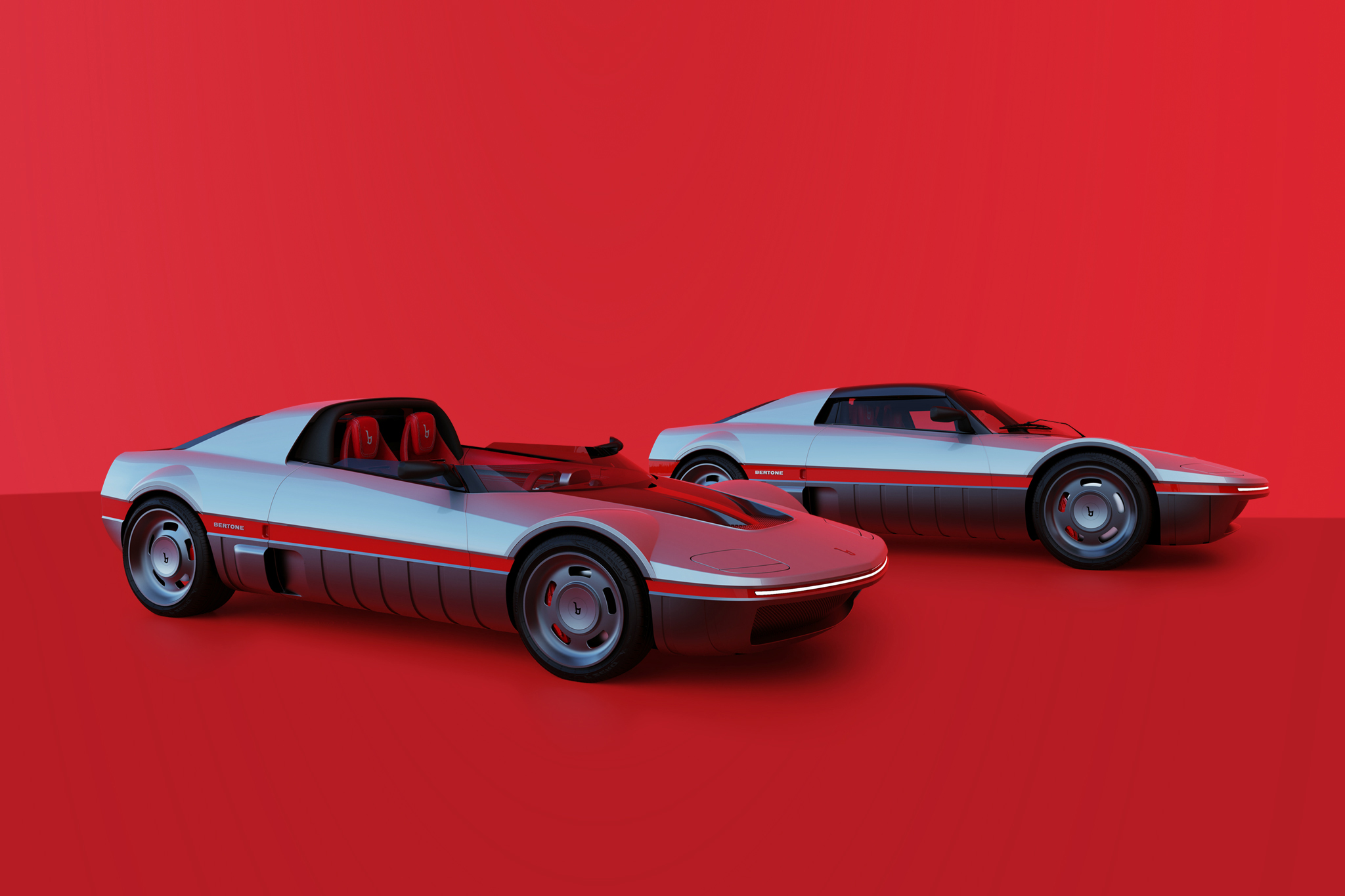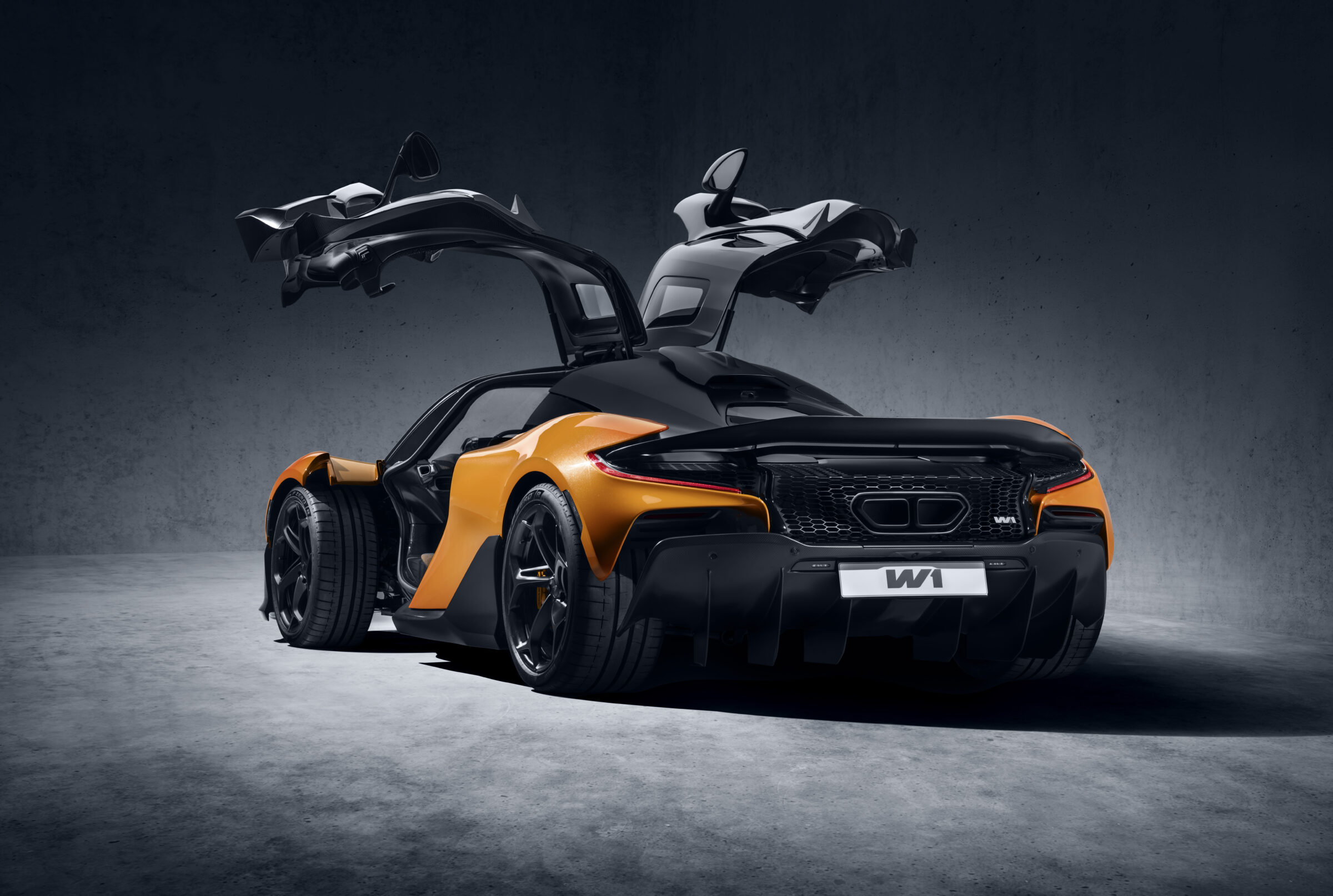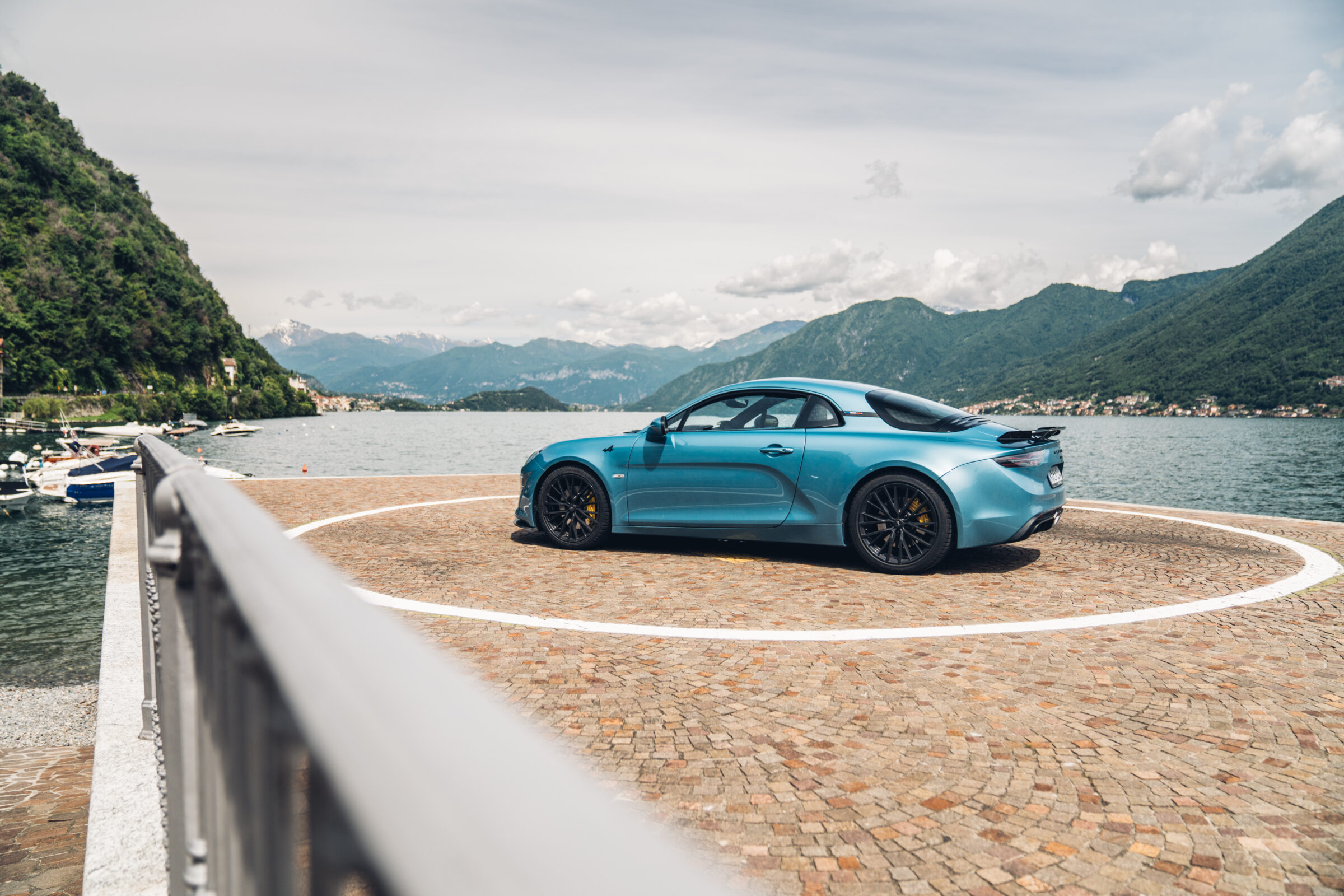Peugeot 205 Turbo 16
It took Peugeot a few years to develop a competitive Group B car. However, from 1984, the 205 Turbo 16 was finally ready to compete against Audi and Lancia. Unlike some other competitors, Peugeot Talbot Sport consistently developed the rally car first. Only then was the necessary homologation version with road approval created. 200 copies of this had to be sold to private customers according to the regulations. The rules also allowed the production of 20 identical cars to homologate new evo stages for the World Rally Championship. Peugeot made consistent use of this passage and presented the 20 examples of the 205 Turbo 16 Evo 1 at the same time as the 200 road cars. A year later, a further 20 examples of the Evo 2 were produced.
Extensive conversion at Heuliez
Since the regulations required at least some parts of the Group B cars to be taken from large-scale production, Peugeot used normal two-door bodyshells of the 205 as a basis. These were sent directly from the assembly line in Sochaux to coachbuilder Heuliez by truck. There, a far-reaching conversion began. The entire rear end behind the B-pillars was cut off and a bulkhead with window was welded in between the B-pillars. The body was then given a rear subframe to which the engine, transmission and rear axle were later attached. Heuliez also shortened the body at the front and installed reinforced and enlarged wheel arches. In between, the spare wheel was placed above the fuel tank, among other things. Apart from the roof and the A-pillars, the externally visible body parts are made of fiberglass-reinforced plastic. To access the engine behind the passengers, the entire rear section folds upwards.
Rudimentary standard equipment
There under the huge hood, hidden somewhere under hoses, radiators and air baffles, sits a 1.8-liter four-cylinder turbocharged engine. In road trim, it produces 147 kW/200 hp, while the rally version delivers more than 500 hp. Apart from the very first example, all road cars of the 205 Turbo 16 were painted in Winchester grey. There were also no choices for the interior. A two-spoke steering wheel with ‘Turbo 16’ lettering, black and red upholstery fabric and a couple of analog instruments – that’s it. This was quite intentional, as all the manufacturers who were competing in Group B assumed that the road cars would also find their way onto the rally tracks. Some examples also only served as spare parts on wheels.


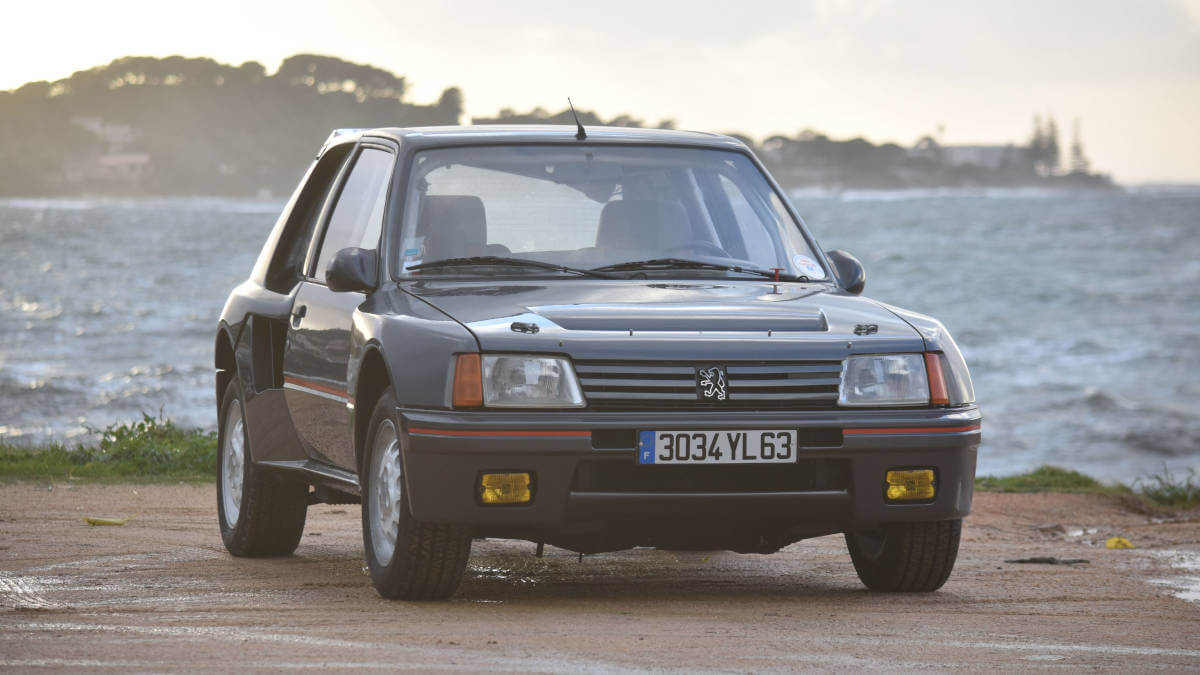

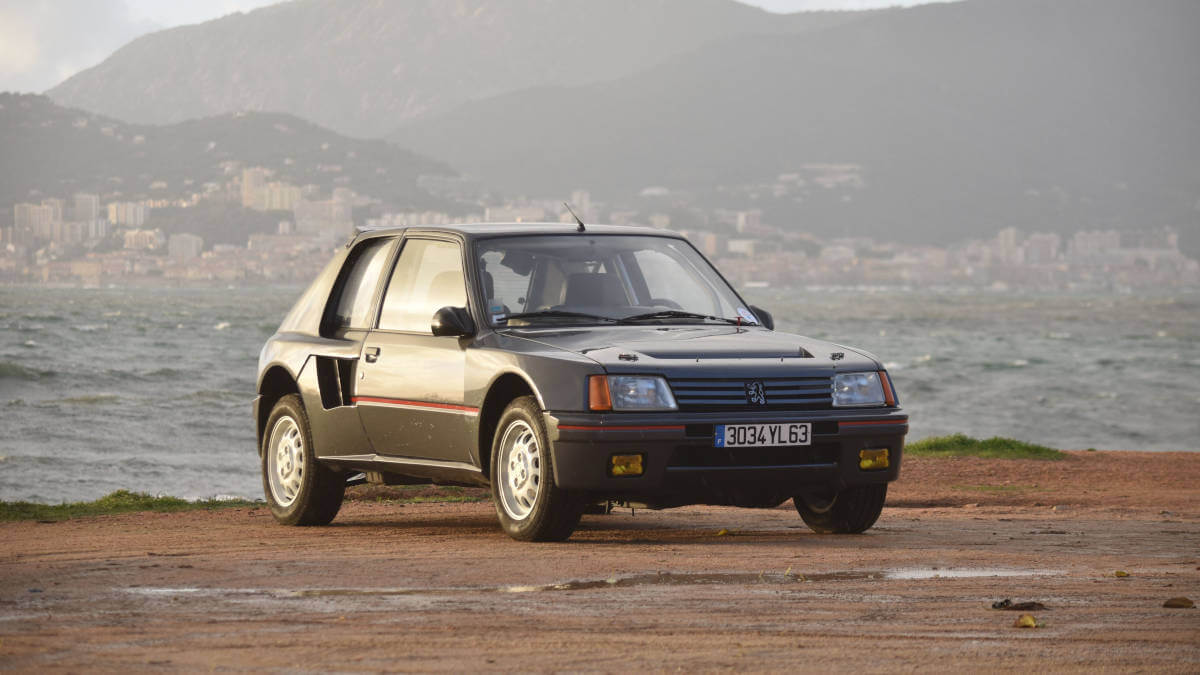

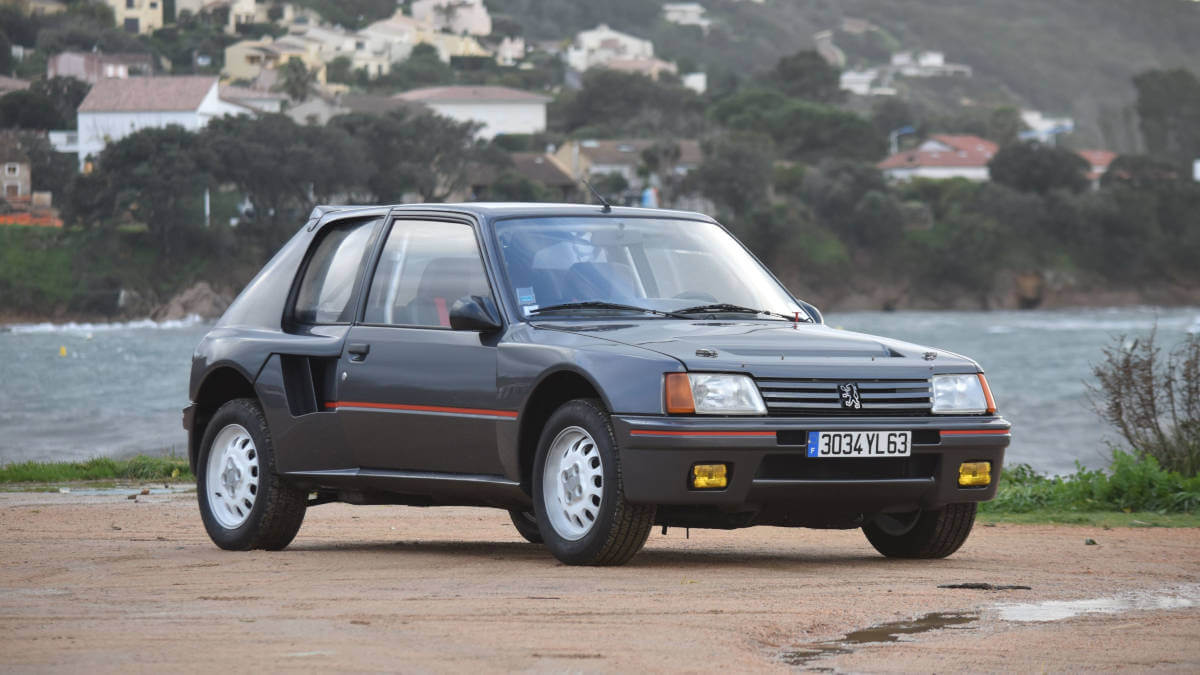

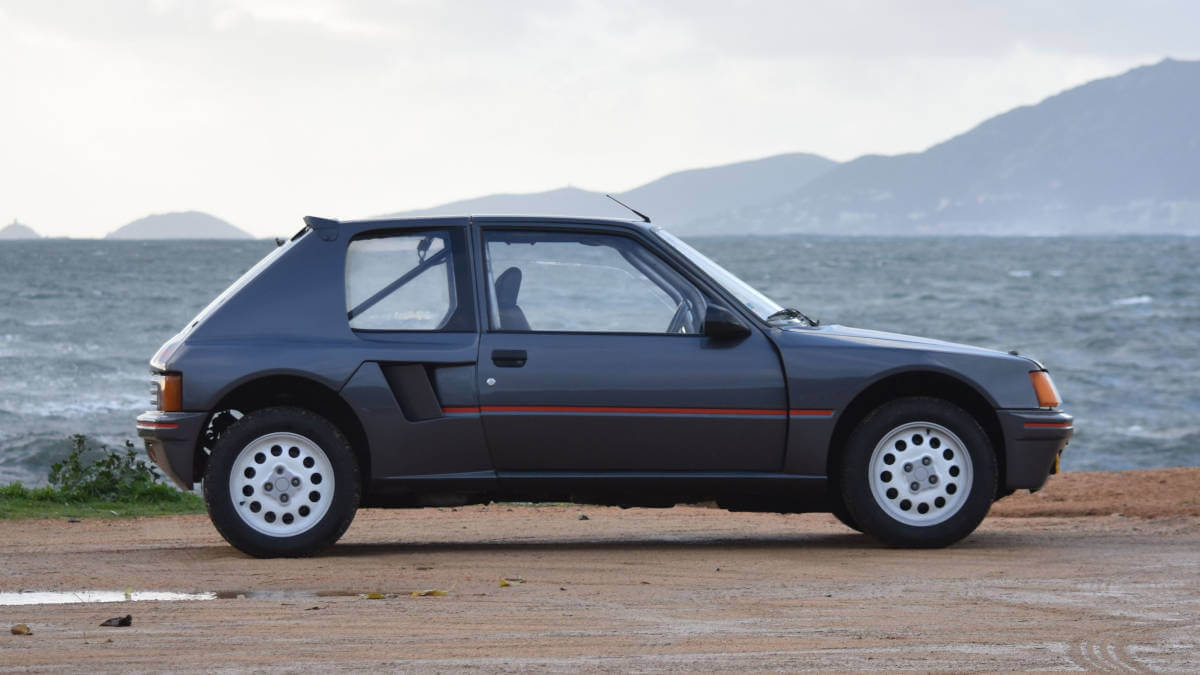



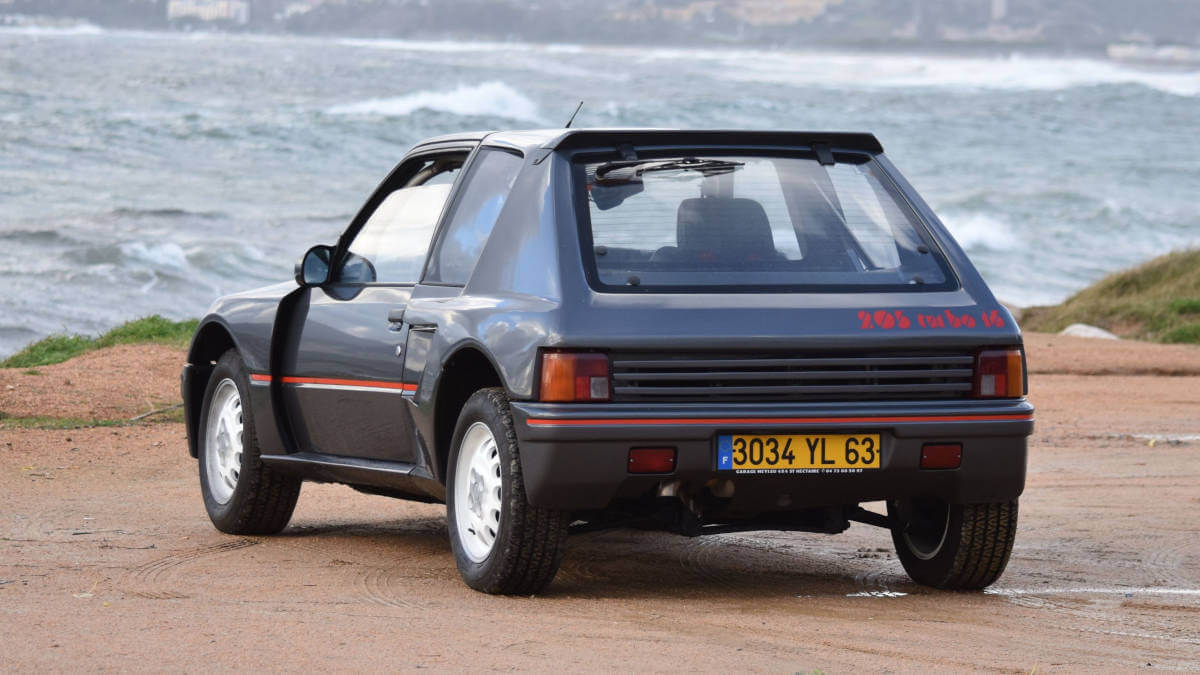





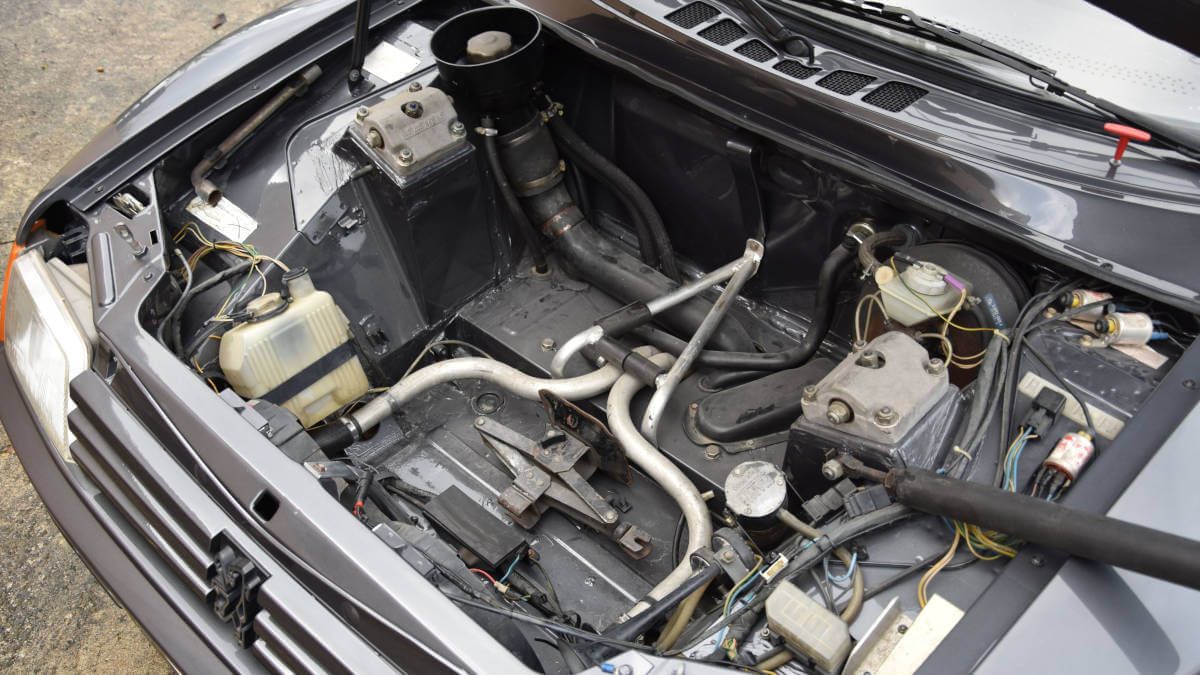





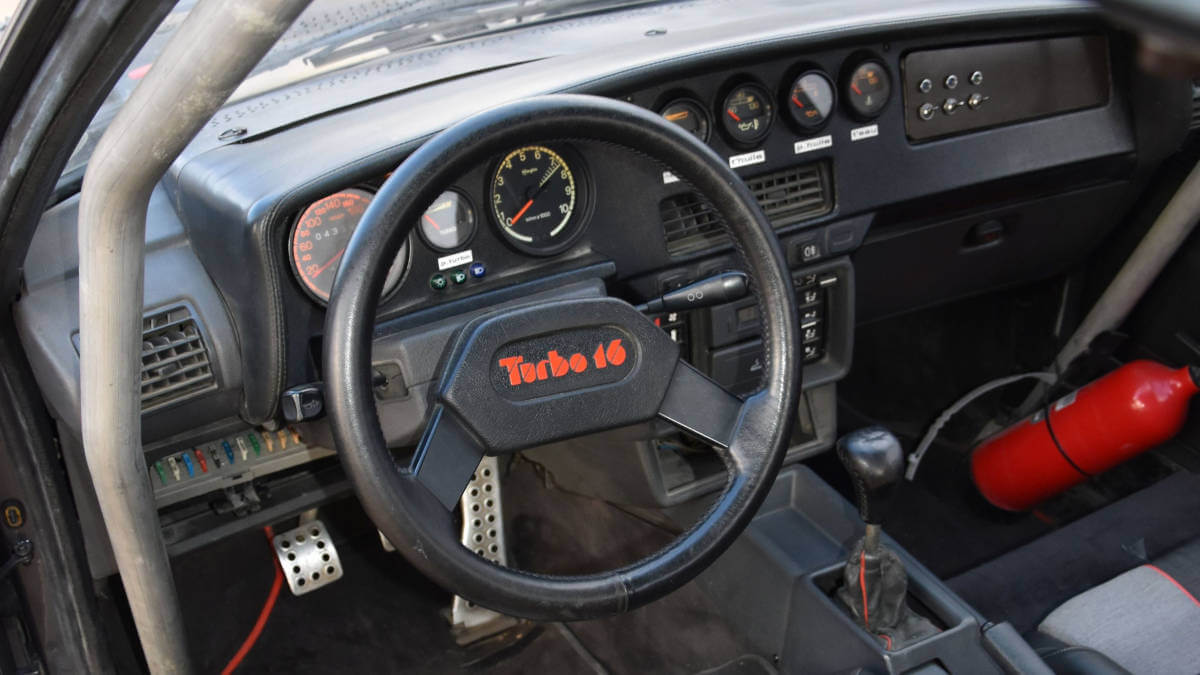







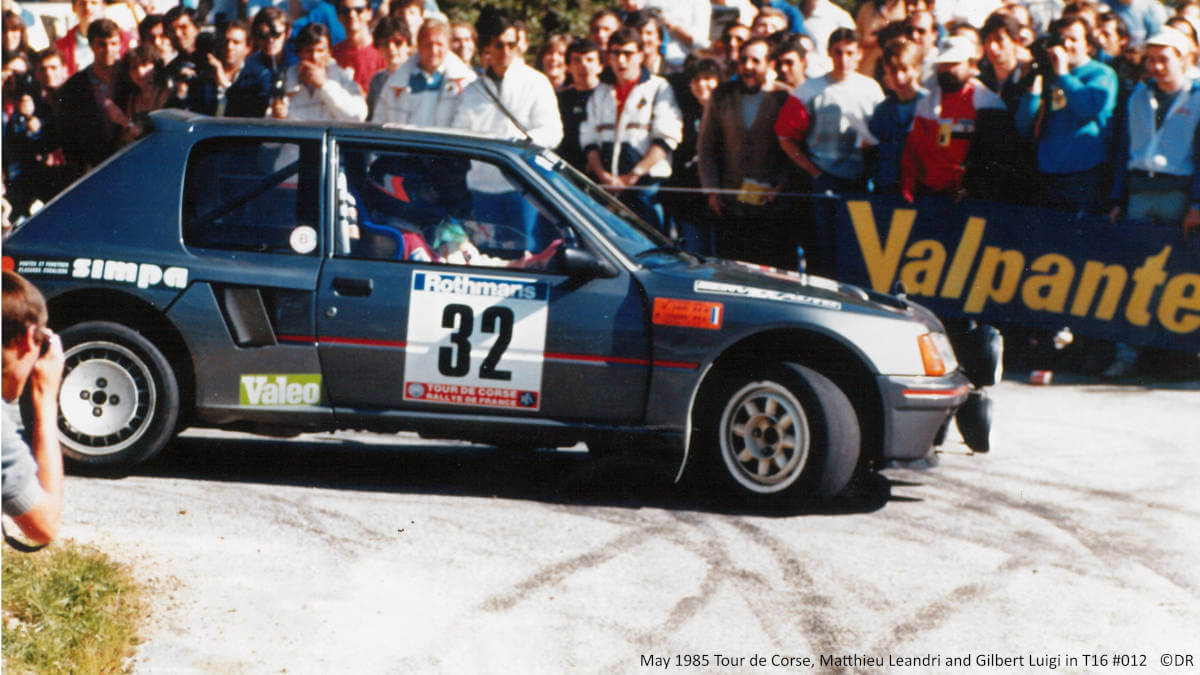

With the road car on the rally track
One Peugeot 205 Turbo 16 road car with a short rally history will be offered by Parisean auction house Artcurial on February 5. It is chassis number 0012, first delivered to the Leandri family in Corsica. François and Matthieu Leandri began rally driving in the early 1980s. The winding mountain roads of the Mediterranean island were a perfect invitation. With the purchase of the 205 Turbo 16, they hoped to have a better chance against the then dominating Renault 5 Turbo. The brothers therefore had the optionally rally kit installed at the delivering dealer Gilbert Casanova in Ajaccio. This consisted of a bolted rollcage, racing harnesses, bucket seats and a modified 4-in-1 manifold for the engine. Thus equipped, Matthieu competed in the 1984 Rallye du Maquis and the 1985 Tour de Corse. After retiring from both events with technical issues and not being able to cover the costs for a full season, Matthieu Leandri gave up his rally career.
Rediscovered by chance at auction
He sold the Peugeot to an enthusiast on the Côte d’Azur. From 2001 to 2017, the car belonged to a collector in Puy-de-Dôme, who had it painted in the original Peugeot Talbot Sport colors. When this owner offered the 205 Turbo 16 at Artcurial’s Retromobile auction in 2017, Franz Leandri, Matthieu’s son, discovered the car in the auction catalog. Based on the chassis number, it was quickly clear that it was his father’s car – even though it was now painted white and fitted with an Evo 2 spoiler. The Leandri family bought the car at auction and restored it to its 1985 Tour de Corse condition. Repainting alone cost around 15,000 €. Now the Peugeot comes up for auction with Artcurial again. Experts expect the hammer price to be between 180,000 and 240,000 €.
Images: Artcurial


